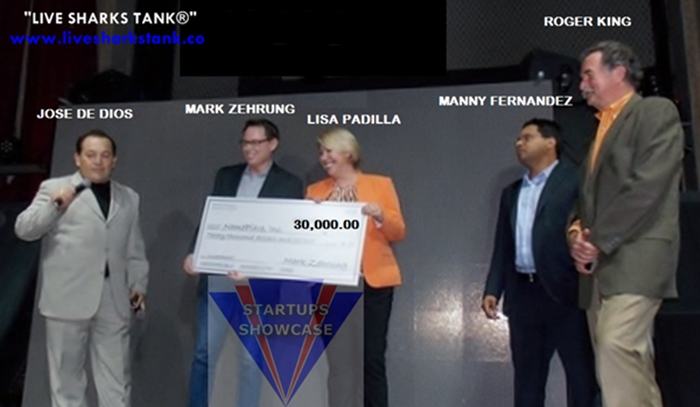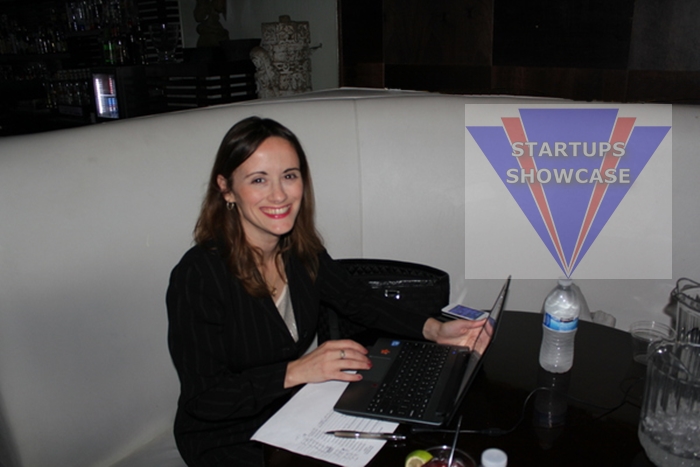
“The capital markets are dominated by men,” stated Bridget Milet, President, CEO & Founder of Aplaz Group, Inc., a Human Resources portal for female entrepreneurs, that raised Angel Investment to scale her company. “Less than five percent of angel and venture capital funding is going to female-founded companies! That means 95 percent of capital is going to male-funded companies.”

We recently interviewed Milet for Startups Showcase Group, Inc. (SSGI’s) blog on angel investing. We realized that we simply did not understand the big picture.
Milet is focused on success is down to earth, joyful, and fascinating single mother of a beautiful daughter, Bella — and a great individual having gone through raising money, to explain the convolution of how ideas become businesses and why investment/capital is so important for those businesses to succeed. What are the investment/capital markets and how do they work? Why should we care?
Women have great ideas, but as Milet told me, the big issue is that the investment/capital (a.k.a. the money) to bring those great ideas to the marketplace is mainly controlled by men. Men tend to invest in ventures and people they can relate to, people much like themselves, namely other men. It’s a serious problem because access to that money is access to opportunity and success.
We asked Milet to walk us through the process. I) Personal Savings II) Friends and Family III) Crowdfunding IV) Angel Investor V) VC
Step 1, one: GETTING STARTED
Milet, has a blazing intelligence and firsthand knowledge of the obstacles women face, while raising capital for her company Aplaz Group, Inc. www.aplaz.com “Raising capital happens in stages,” she said. “If you’re in an early stage and just starting out, you need proof of concept. That is, you prove that people are willing pay for your idea. (I) So you first go into your own pocket and come up with a little bit of money to create a prototype or a business plan. That’s the very beginning of the capital chain.
“Some people don’t have personal resources— savings. (II) The next step is to go to friends and family. If that’s not an option or you’ve already done that, (III) the next step in the capital-raising chain is to create a crowd-funding campaign that says, ‘I want to raise money, and here’s what I’m going to do with it.’ Then you create a compelling video, a story, a tagline, and upload a campaign onto a crowd-funding website.
“When you raise money on a rewards-based crowd-funding platform, people contribute money and get some type of reward in return. They don’t receive any equity in the company. For example, if the product is a film, their name is in the credits. People get something back, but it’s not equity in the company. Typically on any crowd-funding platform, 80 percent of the money that’s raised will come from people you know or your extended network.
“People give money in this case for three reasons: 1) they know you, 2) you asked them, 3) and they like what you’re doing. The crowd-funding platform is valuable because you show that you can put a campaign together and that people will support your idea.
IT ALSO SHOWS YOU CAN ASK FOR MONEY.
“This is one of the biggest challenges for women—they have a hard time asking for money. Time and time again I see women who have a compelling product, put a great story together, but they just can’t ask their friends to fund their ideas. I can’t stress enough how critical it is to get up the courage to say, ‘This is important to me, please give me money.’”
Crowd-funding platforms are particularly vital for women because women don’t have the same access to capital as they move up the capital chain. So let’s assume your friends and family back your campaign. Then what?
Step 2, two: ANGEL INVESTORS
“After crowd funding, the next stage in the chain is the IV) Angel Investor,” Milet stressed the importance! “An angel investor is a high net worth individual or group of accredited investors who can give you money in return for equity in your company. It’s a much more serious process. Angel funds come from a community of people around you or from a club of angel investors.”
One example is Bay Angels, an angel-investing group focused on female-founded companies. “They have a very specific screening process! If you’re accepted, you come in and present to a group of investors.” Probably less than two percent of all companies get funded. The amount of funding is limited, so if you’re going to be approaching an angel investor, there are a couple of things you have to demonstrate.
- “First, you have to show that you actually have a product/service — you have a prototype or something that the group can actually kind of kick the tires of and see how it works.
- “You must figure out/know your business model and your revenue model. How are you going to make money from your product? How much will people be willing to pay for it? Then you need to show how you can scale.
- “Let’s say for example, you’ve created a product and identified a customer. The next issue to address is how you can make it a really big business. What’s your marketing plan? What’s your sales plan? What’s your roll-out strategy?
- “Before approaching angel investors, you need to have that information in place and it needs to be compelling. You also need to assess the competitive landscape. When you think about your company and what you’re doing, what other products may you be competing against? You need to show the size of your market, too. Angel investors, as well as venture capitalists, like to invest in big opportunities. They want to see that what you’re doing represents a very, very big market.
- “Angel investors are looking to invest in a company that will grow; they want it to have huge revenues and profitability so that they can get the specific return they’re looking for—three to five times the money they put in, in a time period of five to seven years. So if you receive $100,000, the investor will be looking for a return of $300,000-500,000 in three to five years.
And you have to present this all in five to seven minutes. “These people have seen the background material that you submitted online, so you don’t need to repeat all of that. What you need to do is convince them that you’re the right person, the right entrepreneur, that you totally know your business, that you’re the one that’s going to make it happen—and that no one else can do it as brilliantly as you can.”
Step 3, three: Venture Capital
Lets say you got your angel investment, your business is booming, and you’ve paid your investors back. The next step, Milet says, “is to acquire V) Venture Capital (VC), and that’s a very big deal.
- “The good news about VC is that you can get a lot of information about it online. At CB Insights you can find the most active venture capitalists in every sector,” from tech to hospitality, consumer products, etc. Once you create a list of potential VCs, sort it by success.
- “The top tier are the 10 VC firms that have invested in a lot of the big name companies, and it goes down from there. You should start pitching the lower tier firms, because they’ll be friendlier and more open. You’re going to have to make 50 calls and mostly you’re going to hear no.
- “If you get an appointment, keep in mind that the VC’s business is to look at a lot of companies. Many times you’re invited because they want market intelligence; they want to know what’s out there. Maybe they’re looking at a competitor company. Just because you’re invited to come in and do a pitch doesn’t mean they’re really serious. It’s a process. Think of it as a version of applying to colleges or going for job interviews. You have to see many.
- “You could hit a VC firm at the right time or the wrong time and might be turned down for reasons that have nothing to do with you or your company. You could present and find out that they’ve just done 10 investments in the last month and they’re going to take a breather. Or maybe they’ve invested in a company that’s close to what you do, so they don’t want any more exposure in that area. Part of the process is timing and luck, and you just have to have a thick skin. You have to tell yourself to ignore the no’s and go on and make the next call.
- “The other thing to keep in mind is the balance of power. Often companies come in to VC’s and they’re intimidated. It’s as if these big money people are gods; they have so much power, they’re so smart. And they behave that way—it’s a weird dynamic. I think it’s better to keep in mind that VCs are in the business of investing in companies. They need you as much as you need them. If they don’t have good companies to invest in, they’re out of business. It’s a reciprocal relationship—and this is something that’s often difficult for female founders to reconcile. You have to believe that you have a company they need.”
Helpful Sources towards capital/investment…
If you’re preparing a pitch to investors and need some help, there are a number of options.
- 10,000 Small Businesses, a program open to both men and women
- Tory Burch Foundation sponsors a portion of the program that’s female-only.
Accelerators vs. incubators
Accelerators take single-digit portions of equity in companies in return for small amounts of capital and mentorship. They’re generally truncated into a three to four month program at the end of which the start-ups “graduate.”
An incubator, on the other hand, brings in an external team to manage your idea and takes a much larger amount of equity compared to accelerators because they allow more time for the business to be successful. Women often have a difficult time participating in these programs because they require leaving families and traveling to the site of the accelerator/incubator for months or even years.
Crowd funding
The number of female-focused angel investment groups may leave you breathless, to get you started, Google search Female focused Angel Investors – and go to work!
Every day, organizations are emerging to increase female access to opportunity. And while all of these efforts will ultimately pay off, change begins one individual business at a time. As Bridget Milet would say, “People will support you, but you first have to ask them.”